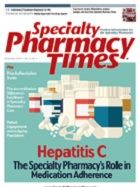Publication
Article
Specialty Pharmacy Times
Patient Engagement and an Aging Population
Author(s):
Understanding the needs of seniors with cancer and helping them to manage the complexities of the treatment process are essential to successful patient engagement and improved clinical outcomes.
Understanding the needs of seniors with cancer and helping them to manage the complexities of the treatment process are essential to successful patient engagement and improved clinical outcomes.
In 2011, the Baby Boom generation—those Americans born from 1946 to 1964—began turning 65 years of age. Often identified for their efforts in the counterculture movement and social change, baby boomers are now AARP card holders, with the youngest baby boomers turning 50 in 2014.
According to the US census, 12% of the population was 65 years or older in 2010. By 2030, when the last of the Baby Boom generation turns age 65, 20% of the United States population will be 65 years or older.1 With anticipated longer life expectancy, this demographic shift will have a significant influence on health care and American culture.
Cancer and the Aging Population
When it comes to cancer, older Americans are affected the most. According to the National Cancer Institute’s Surveillance, Epidemiology, and End Results Program fact sheet, 1,665,540 new cases of cancer will be diagnosed in 2014.2 Nearly 53% of new cancer diagnoses occur at 65 years and older. The age group most affected by newly diagnosed cancer is 65 to 74 years. (See Table 1.)
For individuals newly diagnosed with cancer, fear, stress, anxiety, and depression are strong emotional forces that can impact behaviors and ultimately influence how well individuals cope and adhere to their treatment. Compounding their emotional state, newly diagnosed patients must navigate a complex health care system and develop an understanding of their specific disease and treatment options. The emotional toll of the cancer diagnosis along with mental effort to acquire this new medical literacy can bewilder the newly diagnosed older patient, causing inaction and further confusion.
{Click image to enlarge}
Patient Engagement Matters
There is a body of evidence that shows the correlation between patient engagement and clinical outcomes. An engaged patient actively participates in their treatment plan and is more likely to persist with their treatment plan despite negative side effects. Engagement occurs when the patient believes and commits to the treatment strategy. (See Figure.)
Trust, a shared connection or relationship, and understanding are central to the formation of engagement. For the older patient, who may be more reluctant to review treatment options, voice concerns, or follow prescribed treatment regimen, patient engagement is an imperative.
The specialty pharmacy is one of the first parties to engage with the patient once a treatment plan is crafted. It is the quality of this initial interaction that subsequently impacts the patient’s ability to trust and understand their treatment, including its emotional, physical, and financial ramifications, and ultimately fosters the patient’s confidence and commitment to their treatment.
{Click image to enlarge}
Technology—Be Mindful of Your Audience
Web-based communication and technology enable specialty pharmacies to interact and share information with patients quickly and efficiently. Online communications and smartphone apps offer scalable, personalized messages and vast array of content that can help patients become better informed and improve their medical literacy.
When leveraging these technologies to an aging population, senior Internet usage and the physical limitations of older patients must be considered. Based on a survey conducted by Pew Research Center in 2013, senior internet usage has steadily climbed year over year, with 59% of seniors reporting Internet usage. More seniors are using the Internet; however, their usage rate is still well below that of the general adult US population (86%). Among seniors, higher Internet and broadband usage were identified in the following groups: seniors aged 65 to 69 years; seniors with higher annual income ($75,000 or more); and seniors with a college education. In the survey, seniors identified physical limitations and a need for assistance in learning as barriers to adopting or using technology. This suggests that Web-based communications and technology may have a role with some seniors, but should be used judiciously.
Recently, Cardinal Health Specialty Pharmacy updated its website, www.oncosourerx.com. Design changes that support the needs of an older user include:
- Clear, boldly marked patient portal for easier access
- Large font for easier reading
- Landing pages free of distracting moving graphics
- Video drug summaries with a recorded pharmacist to conveys important drug information in a personal, simplified manner
- Marked tabs to additional informational resources instead of embedded hyperlinks to prevent going to another website unintentionally
Specialty pharmacies are uniquely situated in the health care delivery system in our direct relationship with patients, physicians, payers and drug makers. This position enables our industry to facilitate patient engagement and ultimately to deliver improved care and clinical outcomes. SPT
References
- 2012 National Population Projections. US Census Bureau website. www.census.gov/population/projections/data/national/2012.html.
- SEER Stat Fact Sheets: All Cancer Sites. National Cancer Institute website. http://seer.cancer.gov/statfacts/html/all.html.
About the Author
Mark Vineis, MBA, is vice president of OncoSourceRx, Cardinal’s specialty pharmacy division. He previously held the positions with Genentech, GlaxoSmithKline, and AstraZeneca. He earned his MBA in marketing at Temple University.







